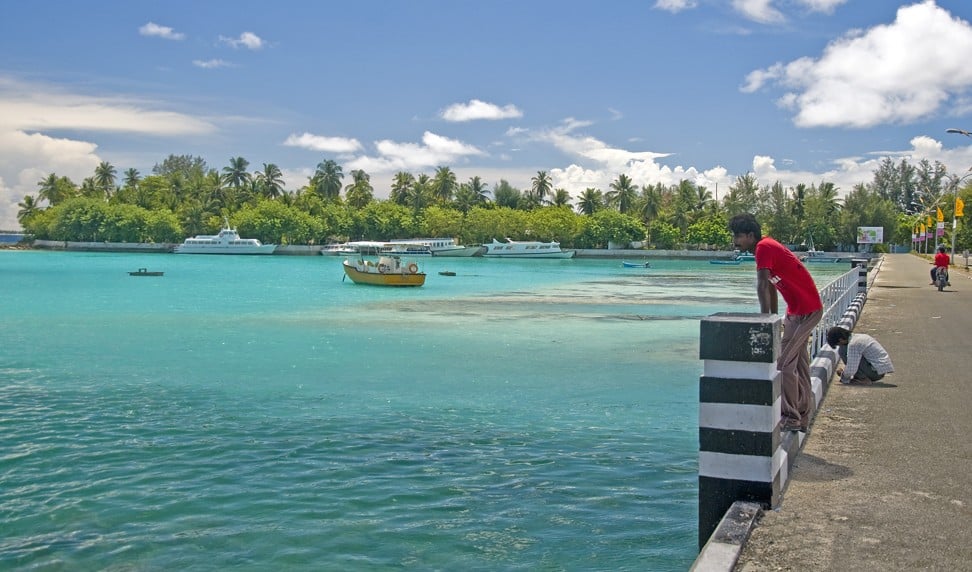Mobile phone signals aren’t guaranteed in the following places but travel bragging rights definitely are. These destinations even come with their own superlatives.
Even in a list of desolate destinations, Pitcairn Island wins by some distance. Best known as the 18th century hiding place of mutineers from the British ship HMS Bounty, no inhabited island is further from a mainland. The British Overseas Territory is barely more accessible today than it was in 1790.
Anyone planning to visit from Hong Kong would need to fly to
The world’s coldest permanently settled area, Oymyakon shivers in the Siberian permafrost a two-day drive across the Russian
Students are expected to attend classes unless the mercury falls below minus 52 degrees Celsius (-61.6 degrees Fahrenheit) and newly arrived visitors are reminded that saliva freezes in open mouths, glasses stick to faces and batteries last only a few minutes.
Few crops survive in temperatures that can plummet to a bone-chilling minus 70 degrees and locals make do with reindeer meat, raw flesh shaved from frozen fish and ice cubes of horse blood with macaroni.
Based on a year-round average temperature of 34.5 degrees Celsius (94.1 degrees Fahrenheit), the Danakil Depression is the hottest place on Earth. The inhospitable desert in northern
Visitors need to tread carefully – the surreal landscape is littered with sulphur springs, geysers, acidic pools, huge salt pans, volcanoes and multicoloured mineral lakes. Amazingly, there is human activity at the “gateway to hell”. More than 700 officially registered salt miners toil in the furnace-like conditions for about US$7 per day.
Located in the Bay of Bengal, more than 1,300km (807 miles) off the east coast of India, the Andaman Islands are the peaks of a submerged
Of the 572 islands, only about 30 are inhabited, one of which is regarded as the most difficult place to set foot on as it’s home to the world’s most isolated tribe. North Sentinel Island gained notoriety last year when an American tourist was killed by bow and arrow-wielding Sentinelese warriors, having ignored warnings from fisherman not to go ashore.
An out-of-the-way settlement in a hard-to-reach country, Ittoqqortoormiit is the remotest inhabited community in the western hemisphere. Weekly flights to this distant corner of Greenland require an onward helicopter transfer to the village, although for a month or two in summer, cruise ships are able to negotiate the iceberg-infested waters.
The 450 inhabitants rely on fishing and hunting (including an annual quota of 35 polar bears) for survival and let off steam by dog sledding and snowmobile camping trips along the banks of Scoresby Sund. The world’s longest fjord serves as a gateway to Northeast Greenland National Park, the world’s largest.
The luxury resorts of the Maldives are easy enough to reach, usually with a seaplane or speedboat transfer after a long-haul flight. For something more quirky, book a flight to Gan.
From 1941 to 1976, the southernmost island in the archipelago served as a British Navy and
The beguiling beauty of Wadi Rum feels older than time. For centuries only nomadic Bedouins were able to survive in the inhospitable desert, situated in the far south of Jordan, the safest country in the Middle East. Then along came charismatic British officer T.E. Lawrence (of Arabia), who led an Arab revolt against the Ottoman Empire from Wadi Rum during the first world war.
His description of the otherworldly desert formations and empty landscape as “vast, echoing and God-like” is as accurate today as it was a century ago.

Gan, in the Maldives. Photo: Tim Pile
The most remote inhabited archipelago in the world, volcanic
Appropriately enough, it shares the Unesco designation with Inaccessible Island, 30km (19 miles) southwest of Tristan. The only way of reaching this far-flung South Atlantic bolt-hole is by ship from Cape Town – a seven-day sailing that operates nine times a year.
More than six million tourists visited Grand Canyon National Park in 2018 but hidden away in the craggy sandstone formations lies the only village inside the canyon. Supai is the capital of the
Despite being just 13km (8 miles) from the nearest road, the only way to reach the settlement and stunning turquoise waterfalls is by helicopter, mule or on foot.
Located 480km (298 miles) north of the Arctic Circle, Utqiagvik,
